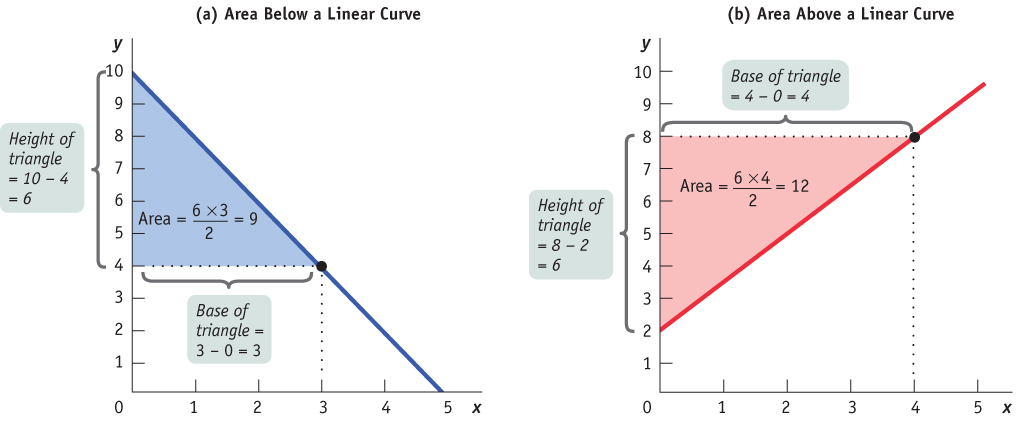Calculating the Area Below or Above a Curve
Sometimes it is useful to be able to measure the size of the area below or above a curve. To keep things simple, we’ll only calculate the area below or above a linear curve.
How large is the shaded area below the linear curve in panel (a) of Figure A.6? First, note that this area has the shape of a right triangle. A right triangle is a triangle in which two adjacent sides form a 90° angle. We will refer to one of these sides as the height of the triangle and the other side as the base of the triangle. For our purposes, it doesn’t matter which of these two sides we refer to as the base and which as the height. Calculating the area of a right triangle is straightforward: multiply the height of the triangle by the base of the triangle, and divide the result by 2. The height of the triangle in panel (a) of Figure A.6 is 10 – 4 = 6. And the base of the triangle is 3 – 0 = 3. So the area of that triangle is

| Figure A.6 | Calculating the Area Below and Above a Linear Curve |

How about the shaded area above the linear curve in panel (b) of Figure A.6? We can use the same formula to calculate the area of this right triangle. The height of the triangle is 8 – 2 = 6. And the base of the triangle is 4 – 0 = 4. So the area of that triangle is
